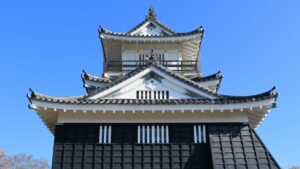Myokakuji Temple, Nobunaga's Innovative Venue for Tea Ceremonies
Oda Nobunaga held his tea ceremonies at Myokakuji Temple, his lodging during his stay in Kyoto. Here, Nobunaga and Sen-no-Rikyu met. The two innovators began to resonate with each other in their rational minds. Nobunaga appointed Rikyu as the tea master for the tea ceremony held at Myokakuji Temple in 1573.

Encounter between Nobunaga and Sakai Merchants
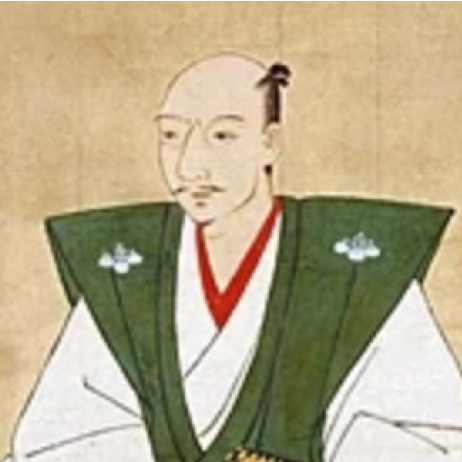
In 1598, Oda Nobunaga (1534-1582, 織田信長) supported Ashikaga Yoshiaki (1537-1597, 足利義昭), the younger brother of the 13th Muromachi shogun, and went up to Kyoto. Nobunaga then pacified the Kyoto area. In 1599, on New Year's Day, Nobunaga imposed 20,000 kan (200 million yen in today's value) for war funds on the merchants of Sakai. This was the beginning of a relationship between the Sakai merchants and Nobunaga. At that time, Sakai flourished as an autonomous city with its economic power based on the trade through its port. Luis Frois, a missionary, described Sakai as the Venice of the East. Sakai merchants imported the niter to make gunpowder necessary for battles and supplied them to the warlords. At the same time, they were in charge of organizing tea ceremonies.

Sen-no-Rikyu (1522-1591, 千利休)was born in Sakai, a prosperous and self-governing city. Not a few Sakai merchants were followers of the Hokke school of Buddhism, which emphasized worldly benefits. The innovative art of Honami Koetsu (1558-1637), Hasegawa Tohaku (1539-1610), and Kano Eitoku (1543-1590), all followers of the Hokke school, flourished at about the same period. The relationship between the tea ceremony and innovative artists is unclear, but its innovativeness may have flourished because of this period and the Sakai merchants.
Nobunaga's Cultural Refinement: The Nurturing Environment

Since the Kamakura period, the warriors sought to be in both literary and military arts. Therefore, they mastered waka and renga (traditional Japanese poetry), kemari (Japanese football game), and Noh plays. Sometimes they played Noh. In addition, they learned the essentials of being a good ruler from Zen monks while asking and answering Zen questions. Nobunaga also learned the both. Celebrated his coming of age at the age of thirteen, he fought his first battle wearing a red silk cape, haori coat, and horse armor, which were prepared by Hirate Masahide, a retainer of his father and his guardian and advisor. Yamashina Tokitsugu, a court noble and cultural figure known for his outstanding knowledge of the court culture and ceremony, wrote in his diary called Tokitsugu-kyō ki: I was impressed by the beauty of Masahide's sukiya (tea ceremony room). (Source: Main Library, Kyoto University) The tea room was probably filled with fine tea utensils. Nobunaga's cultural upbringing and aesthetic sense, including the tea ceremony, were probably nurtured by an excellent cultural samurai, Hirate Masahide.
Nobunaga's Passion for Collecting Renowned Tea Utensils

(@Shinsho Gyokuraku-ji Temple)
In April 1569, Nobunaga carefully selected and collected such masterpieces as the Hatsuhana tea canister (初花), Fuji-Nasu tea caddy (富士茄子), Kabura-Nashi flower vase (蕪なす), and Heisha Rakugan-zu (Geese alighting on a sandbank). During the turmoil following the Onin War (1467-1477), Nobunaga bought up famous items that had been pawned on wealthy merchants to raise money for the war effort.
Tea Party Created the Foundation of Nobunaga‘s Government
In 1573 when Nobunaga defeated the Asakura clan, he held a tea ceremony at Myokaku-ji Temple in Kyoto serving hearty three courses of food. He hung two paintings entitled "Eight Views of the Xiao and Xiang(瀟湘八景図)," said to be one of the masterpieces of ink brush paintings. These paintings were acquired from the Sung dynasty by the third Shogun of the Murmachi Shogunate, Ashikaga Yoshimitsu, and hung in the meeting hall of Kinkakuji Temple. But, the paintings left the hands of the 8th Shogun, Ashikaga Yoshimasa, once the Onin War broke out, and became the family treasure of the warlord, Asakura clan in Echizen (Fukui). These paintings are not only a prize of war, but also the authority of the warlord since Nobunaga got what belonged to the Shogun, a top samurai. Also, a great white tenmoku tea bowl was unveiled, which was presented by Osaka Honganji Temple during the first peace settlement of the 10-year Honganji War against Nobunaga. It was a symbol of the settlement. Nobunaga showed these to his retainers and firmly united for future battles.


Two years later, in 1575, at the tea ceremony held at Myokakuji Temple, the 煙寺晩鐘図 of the "Eight Views of the Xiao and Xiang" was hung on the wall, which was presented to Nobunaga by Matsunaga Hisahide. He rebelled against Nobunaga but was outnumbered, and this gem was presented to Nobunaga as proof of his surrender. Also on display were the "White Tenmoku Tea Bowl," unveiled in the previous tea ceremony, and the tea caddy, "Tsukumo-Nasu," which Hisahide presented to Nobunaga seven years ago when he first became his vassal. The "Tsukumo-Nasu" was also a specialty that Hisahide obtained after handing down through the hands of Ashikaga Yoshimitsu, Ashikaga Yoshimasa, and the Yamana clan, the Muromachi shoguns' chief advisor. The fact that Hisahide surrendered twice to Nobunaga and was forgiven must have been burned into the eyes of all the participants. As Nobunaga's power grew, so did his highly individualistic vassals' number and scope of activities. The tea ceremonies played an important role in establishing order in Nobunaga's expanding administration.
The tea ceremonies served three functions: (1) to reward vassals for their victories by granting them the famous tea goods and the right to hold tea ceremonies using their specialties, (2) to unite them in victory for the next battles, and (3) to spread Nobunaga's power through the Sakai merchants and tea masters: Rikyu, Tsuda Sokyu, Imai Sokyu.
Two Innovators in Resonance: Nobunaga and Rikyu
While respecting tradition and culture, as a warlord in the Warring States period, Nobunaga embodied innovation, abandoning the old ways that did not make sense and pursuing rationality. Meanwhile, the rationality and innovation of Rikyu were about to bloom, and the two innovators began to sympathize.
Since the establishment of the Kamakura shogunate in 1185, the reward for retainers had been the land. Nobunaga greatly transformed this into the granting of masterpieces such as tea utensils with the right to hold tea ceremonies since there would be no more lands to give as national unification progressed. The masterpieces of painting and tea utensils were originally selected by the Karamono Bugyo of the Muromachi shogunate, retainers who selected the great goods. In the turbulent times following the Onin War, the masterpieces left the hands of the 8th shogun, Ashikaga Yoshimasa, and began to drift through the Sakai merchants and warlords. It was Nobunaga who set the stage for the masterpieces of the Muromachi shogunate to become a symbol of status among the warlords to have them in their possession.
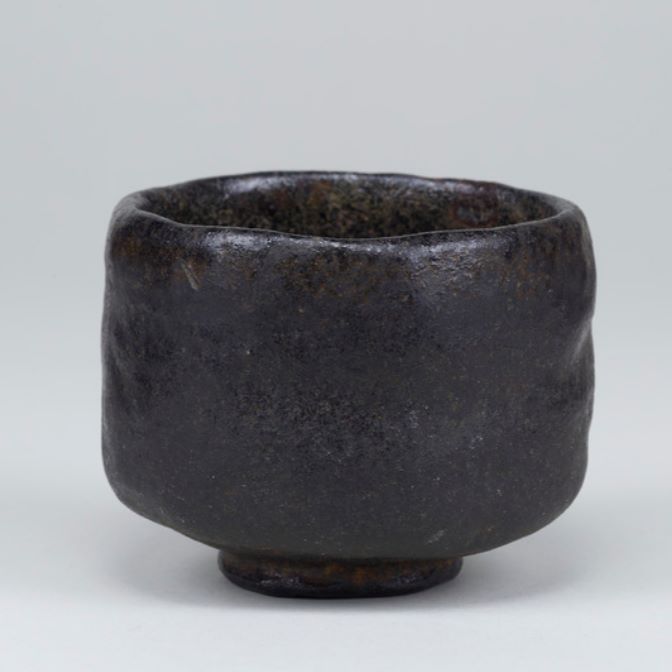
Rikyu, on the other hand, began to reform the tea utensils and manners of the old-school of tea ceremony in the direction of simplicity. Raku tea bowls made by Chojiro, the first generation of the Raku family. Handmade without the use of a potter's wheel, the Raku tea bowl fits comfortably in the palm, and its deep black color expresses the ultimate beauty of simplicity without any waste. Functionally, conventional porcelain tea bowls are too hot to touch due to their high thermal conductivity, and the tea cools quickly. The Raku tea bowls, however, have successfully overcome these disadvantages. The thick black tea bowls gradually transfer the warmth of the tea to the hand, but the tea does not get cold even if you drink it while turning it around.
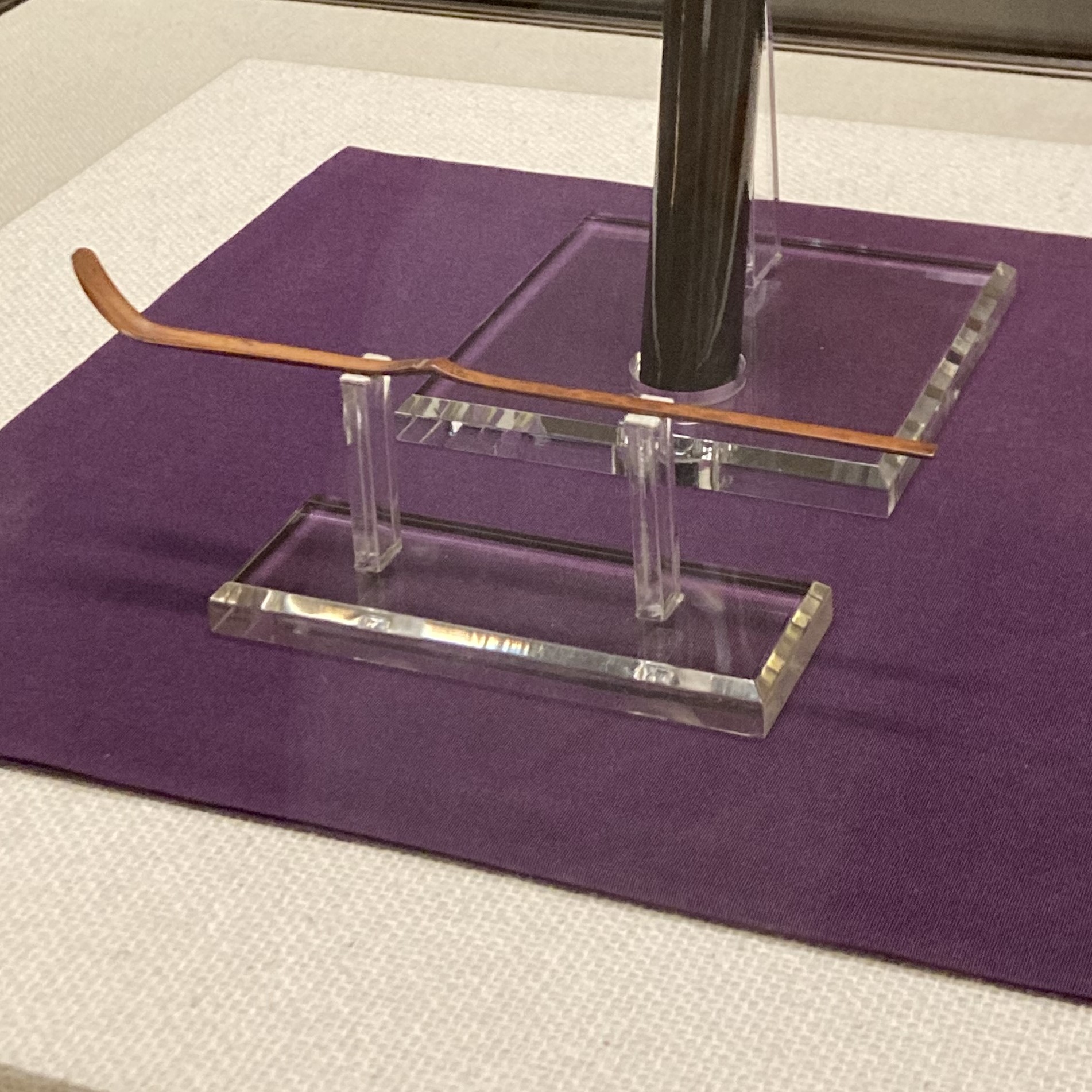
Another example of Rikyu's innovation is the the chashaku, the tea scoop, from "straight-backed" to "ant-backed" and used bamboo instead of the traditional ivory. Rikyu's chashaku had the back of the bamboo joint cut into a concave shape, a rational innovation that made it stable on the gently curved lid of the tea utensil.
Nobunaga's Sudden Death at Honnoji Temple
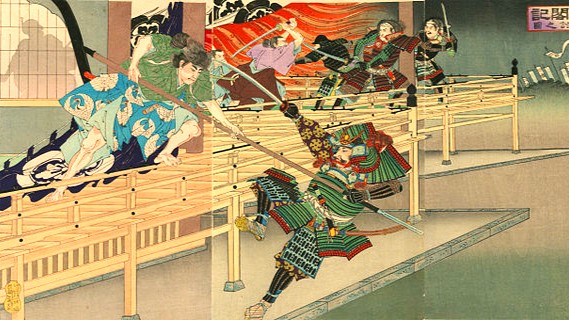
In 1975, Rikyu played a tea master on behalf of his master at a tea ceremony held at Myokakuji Temple. Rikyu's ability must have been greatly demonstrated at the tea ceremonies in front of Nobunaga. However, the relationship between the two innovators was suddenly lost when Nobunaga died in the Honnoji incident on June 21, 1582. Of the 38 items of Nobunaga's masterpieces brought from his Azuchi Castle to Honnoji Temple, 36 were burned to ashes. Two items, “Tsukumo-Nasu” and “Seitaka-Tatatsuki,” were picked up from the ashes. These items are still in existence.
Taian Teahouse, Rikyu's Response to Nobunaga as an Innovator with Innovation
About 10 days after the Honnoji incident, Toyotomi Hideyoshi, a vassal of Nobunaga, defeated the rebel Akechi Mitsuhide in the Battle of Yamazaki in southern Kyoto. Soon after the victory, Rikyu was ordered by Hideyoshi to build a teahouse, now called Taian (national treasure), as his masterpiece. The room was only 2 tatami mats, although conventionally the standard size was 4.5 tatami mats. Rikyu created Nijiriguchi, a small entrance, and windows in the wall. It was a groundbreaking teahouse. Rikyu may have responded to Nobunaga as an innovator with innovation.
Nobunaga & Rikyu Timeline
| Nobunaga | Rikyu | Period | ||
|---|---|---|---|---|
| 1336/11 | Ashikaga Takauji estabilished Muromachi Shogunate | - | Muromachi | |
| 1467 | Onin War started (- 1477) | - | - | Warrin State |
| 1482 | Ashikaga Yoshimasa started to build Ginkakuji Temple | - | - | |
| 1522 | Rikyu was born | - | Age =1 | |
| 1534 | Nobunaga was born | Age=1 | 12 | |
| 1560 | Nobunaga defeated Imagawa Yoshimoto at the battle of Okehazama | 27 | 38 | |
| 1569 | Nobunaga began to collect the tea utensils | 36 | 47 | |
| 1570/06 | Nobunaga defeated the Asai and Asakura clans | 37 | 48 | |
| 1571/03 | Nobunaga held Tea Ceremony at Tofuku-ji Temple (Tea Master: Imai Sokyu) | 38 | 49 | |
| 1571/09 | Nobunaga defeated Enryakuji Temple | 38 | 49 | |
| 1573/07 | Muromachi Shogunate ended | 40 | 51 | Azuchi Momoyama |
| 1573/09 | Azai & Asakura clan ended | 40 | 51 | |
| 1573/11 | Nobunaga held Tea Ceremony at Myokakuji Temple (Tea Master = Rikyu) | 40 | 51 | |
| 1574/03 | Nobunaga held Tea Ceremony at Shokokuji Temple | 41 | 52 | |
| 1574/09 | Nobunaga defeated Nagashima Ikko revolt | 41 | 52 | |
| 1575/05 | Nobunaga won against the Takeda clan at the battle of Nagashino | 42 | 53 | |
| 1575/08 | Nobunaga defeated Echizen Ikko revolt | 42 | 53 | |
| 1575/10 | Nobunaga held Tea Ceremony at Myokakuji Temple. (Tea Master=Rikyu) | 42 | 53 | |
| 1579 | The Azuchi Castle Tower was completed | 46 | 57 | |
| 1582 | Nobunaga was killed at Honnoji by Akechi Mitsuhide | 49 | 60 | |
| 1582 | Hideyoshi defeated Akechi Mitsuhide | - | 60 | |
| 1582 | Rikyu built Taian Teahouse | - | 60 | |
| 1582 | Rikyu became a tea master of Hideyoshi | - | 60 | |
| 1590 | Hideyoshi unified the nation | - | 68 | |
| 1591 | Rikyu Hara-Kiri | - | 69 |
Recommendations to Visit
Myokakuji Temple
- Access: 11 min from Kyoto Station to Kuramaguchi on the Karasuma Line of Subway. A 10-minute walk to Myokakuji Temple
Taian Teahouse
- Access: 15 min from Kyoto Staion to Yamazaki Station on JR Tokaido Main Line. A one-minute walk to Myokian Temple. * Need the reservation in advance by a return postcard.

